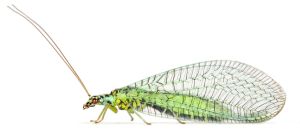Insects with their about one million species form the most diverse and most successful group of animals. For mankind, they have an enormous ecological and economic significance, e.g. as pollinators of crops or carriers of diseases. In the renowned journal Science, an international team of researchers now for the first time present a widely branched insect tree of life. These fundamental research results may lead to valuable applications in biotechnology or agriculture.
For the calculation of the insect tree, the researchers of the 1KITE (1000 Insect Transcriptome Evolution) project used supercomputers that analyzed and classified a large volume of genetic data. Based on genome data, the time of emergence of new species in the tree can be estimated. In the 1KITE project, this “molecular clock” was calibrated based on fossils, as a result of which the reliability of the age information was improved strongly.
The plan to process large volumes of genetic data made the computational biologists face big challenges. “In the planning phase of the 1KITE project, it became clear that the available software would be overstrained with the big data volume. The time until the availability of the gene data was therefore used to find new solutions for executing such analyses on high-performance computers,” says Alexandros Stamatakis, Professor of High-Performance Computing in Life Sciences at Karlsruhe Institute of Technology and Head of the Research Group “Scientific Computing” of the Heidelberg Institute of Theoretical Studies (HITS).
One solution was to modify the algorithms such that improbable evolution scenarios were excluded a priori and, hence, did not have to be calculated. In this way, sufficient computing capacity was available to search the extremely high number (7.1 x 10286) of possible trees for the one that plausibly explains the evolution of insects based on genetic input data. “Otherwise, all computing capacity existing on earth would not be sufficient to calculate the tree of a group of animals that is so rich in species as that of insects,” Stamatakis explains. The software adapted to 1KITE was run on the highest-performance computer “SuperMUC” of the Leibniz Computing Center of the Bavarian Academy of Sciences. The insect tree was computed within a few months. The methods of Stamatakis can now be applied to all creatures or to reproduce the origin and spreading of viruses and bacteria.
Apart from the insect tree proper, 1KITE for the first time provides the public with comprehensive genomic data on insects. Based on these data, it is now possible to compare metabolic pathways of various types of insects and to use this knowledge for pest control. With the publication of the tree reconstructed for the first 144 species representing all insect orders, 1KITE also makes available new methods for the processing and analysis of these data volumes. This is the basis for analyzing even larger data volumes.
Insects for the first time appeared 480 million years ago, together with the first land plants. Already 100 million years later were the insects the first animals to conquer air. They remained the sole rulers of the air for nearly 200 million years. Many of the still living insect groups evolved in the Paleozoic age. Evolution of insects with pupation started 350 million years ago. The insects experienced their first thriving period long before the occurrence of dinosaurs. The explosion of insect species diversity occurred in the Cretaceous period, closely connected with the evolution of flowering plants.
“The 1KITE project is a masterpiece of international cooperation,” explains Bernhard Misof of the Research Museum Alexander Koenig – Leibniz Institute for Animal Biodiversity (ZFMK), Bonn, who headed the project of three years’ duration together with Karl M. Kjer (Rutgers – State University of New Jersey, USA) and Xin Zhou (Beijing Genomics Institute, China). The reconstruction of the insect tree was only possible by a cooperation of more than 100 experts of molecular biology, morphology, paleontology, taxonomy, embryology, and bioinformatics. Thanks to the availability and use of high-performance computers, complex relationships were revealed in the huge biological dataset. The pilot phase of 1KITE will give rise to a number of wide-ranging international follow-up projects, big synergy effects, and long-term cooperative ventures among researchers and institutions.
Video about research under the 1KITE project:
https://www.youtube.com/watch?v=CFsIBdUBFek
Website of the research group of Alexandros Stamatakis:
www.exelixis-lab.org
http://www.informatik.kit.edu/309_6333.php
Interview of Alexandros Stamatakis at KIT:
http://www.youtube.com/watch?v=_6Laa58M-vk
More about the 1KITE project: www.1kite.org
Original publication: “Phylogenomics resolves the timing and pattern of insect evolution“, Science, 7, November 2014
In close partnership with society, KIT develops solutions for urgent challenges – from climate change, energy transition and sustainable use of natural resources to artificial intelligence, sovereignty and an aging population. As The University in the Helmholtz Association, KIT unites scientific excellence from insight to application-driven research under one roof – and is thus in a unique position to drive this transformation. As a University of Excellence, KIT offers its more than 10,000 employees and 22,800 students outstanding opportunities to shape a sustainable and resilient future. KIT – Science for Impact.

